Hellsinki Metal Festival came here to win – Festival report of the second day
The first day of Hellsinki Metal Festival was spearheaded by bands like Dark Funeral, Sodom, Voivod, Apocalyptica and Blind Guardian. The second day of the festival, which was arranged for the first time on the 11th and 12th of August in the Helsinki Ice Hall area, featured stellar performances from black metal veterans Emperor and Watain, prog giants Leprous, doom metal pioneers Pentagram and many more. Much like the first day, the second day was characterized by excellently curated bands, a cozy atmosphere and good weather.
The first band I wanted to see started their set already at 1:30 p.m. on the second main stage. I haven’t dug very deep into hardcore punk, but the genre’s Finnish pioneers Terveet Kädet were a definite must-see band for me. Ex-Sepultura guitarist and vocalist Max Cavalera and Faith No More vocalist Mike Patton are well-known fans of the band, and it’s not difficult to see why. Even after forty years, Terveet Kädet still sounds vicious. With a set mostly composed of fast and even faster songs, the band displayed more aggression than some metal bands on the festival. There were some variations to the short and violent bursts of sound, but most of the set was rather primitive in a good way. It was a brilliant idea to book a band that, while not metal, is similar enough to thrash metal for the audience to enjoy. Läjä Äijälä and co did not tear the stage apart like some younger bands, but they gave the second day of Hellsinki Metal Festival an excellent start. Even that complaint was partially solved when a younger guest vocalist joined the band for several songs and complemented the performance with wild energy and brutal screaming.

After Terveet Kädet, it was time to welcome the first melodeath band of the day, Scar Symmetry from Sweden, to the first main stage outside the ice hall. Formed in 2004, the group has released seven albums so far, the latest of which bears the name “The Singularity (Phase II: Xenotaph)” and came out this June via Nuclear Blast Records. Scar Symmetry is quite popular, but I have never managed to grasp their style. This gig didn’t do much to change that. Even though their music includes all sorts of hooks and different elements, it manages to sound bland. Aside from some cool lead guitars here and there, Robert Karlsson’s bold growling was the only thing I truly enjoyed. The clean vocals, on the other hand, were too sugar-coated for my taste. I can’t deny the Swedes had great energy on stage and knew how to play their instruments, though. I may have been a minority for not enjoying the gig since the band was greeted with loud applause.
Next up was another difficult decision. Swedish death metal veterans Vomitory would enter the second main stage next to where Scar Symmetry played, while American doom metal pioneers Pentagram would take hold of the Kaaos Stage at Helsinki Ice Hall Black Box. Since I am not that familiar with Vomitory’s material and Pentagram were so good the last time I saw them, I decided to go with the latter.
The festival hosted several bands from the 80s, but Pentagram was about to take us further back in time, back to the early 70s. Known for such classic releases as “Day of Reckoning”, “Relentless” and “Be Forewarned”, Pentagram is often considered one of the first doom metal bands alongside Saint Vitus, Witchfinder General and Trouble. Fronted by the charismatic Bobby Liebling, who turns 70 this year, the band played an amazing gig and proved they’re still going strong. Pentagram’s brand of old-school doom metal is delightfully rock-influenced compared to later subgenres like funeral doom, and each song demonstrated their mastery of the style. Even though Pentagram is personified by Liebling, the whole band was enjoying their time on the stage and breathed the music as much as the vocalist. It’s been a while since I listened to Pentagram’s albums, but I didn’t notice any clear faults in the performances. I was a little afraid Pentagram would put on a lazy and tiresome show, but it ended up better than most other bands at the festival. It’s obvious Liebling doesn’t have the energy of a teenager, but I don’t think that matters nearly as much in doom metal as in thrash metal and other faster genres. Complemented by a warm-hearted atmosphere between the band and the audience, the gig was a definite hit.
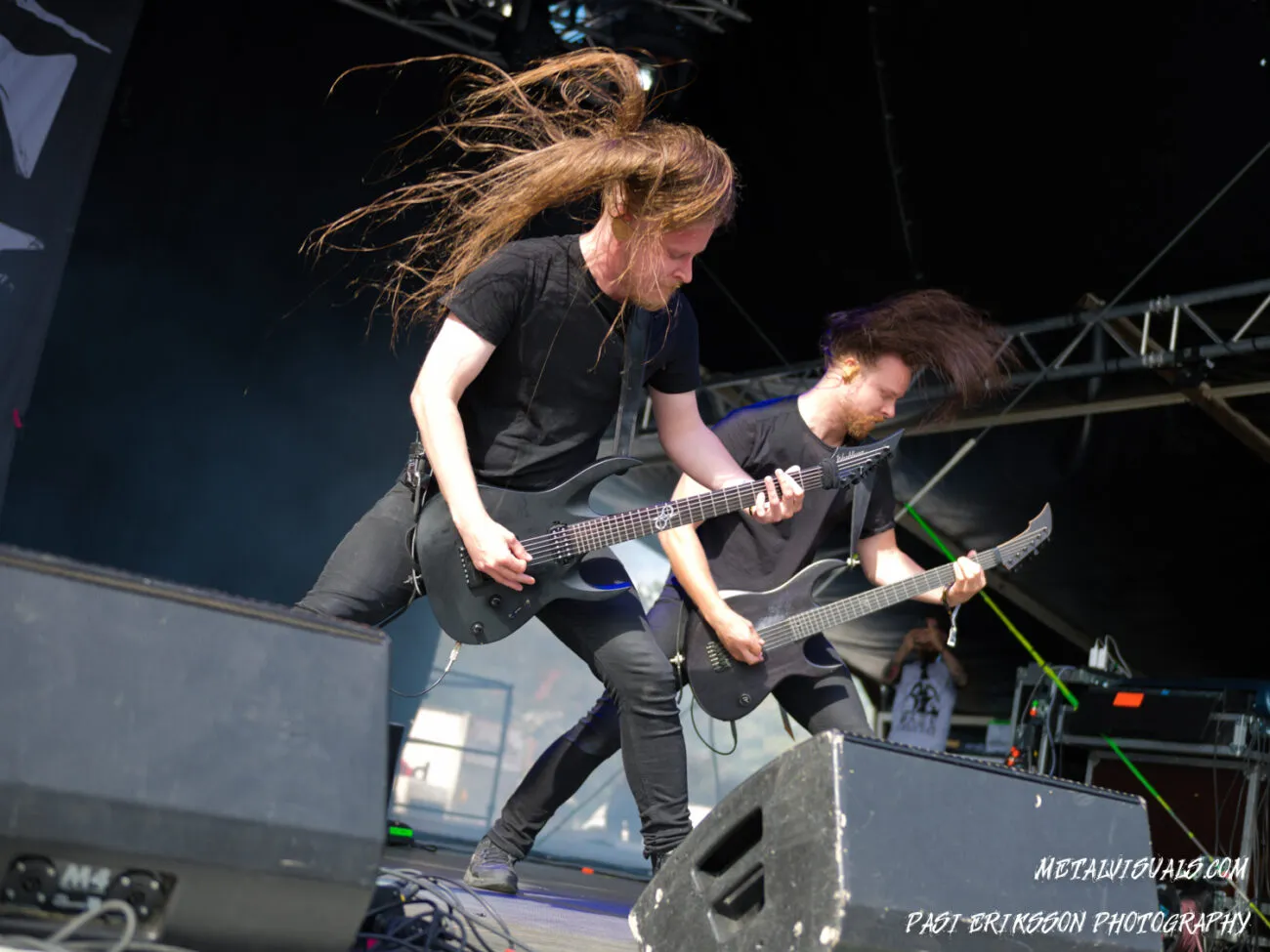
After Pentagram’s show, it was time for something more modern. I’ve been to countless events where Bloodred Hourglass was playing, but this was the first time I managed to catch them live. Formed in Mikkeli, Finland in 2005, Bloodred Hourglass plays an aggressive brand of melodic death metal with thrash metal influences. I was pleasantly surprised to hear melodeath with more emphasis on heaviness and without the sugar-coated vocals of Scar Symmetry and the ilk. I often find the genre bland and soulless, but Bloodred Hourglass delivered a highly energetic show with only traces of the elements I dislike in this style of music. The faster parts were particularly good. Unfortunately, I didn’t find the songs very distinct from each other, but at least it was a good song the band was repeating.
At 5 p.m., it was time for the Swiss metal veterans Samael to rise on the second main stage next to the one Bloodred Hourglass played previously. They were one of my most-anticipated bands at the festival, and I am happy to say they did not disappoint me in the least. The group started their career in 1987 and released a couple of doom-influenced black metal albums, which are generally held in high regard. 1994’s “Ceremony of the Opposites” offered a more refined gloomy and groove-heavy sound, after which the band moved onto industrial metal. The group’s latest effort “Hegemony” was released in 2017 and sounds almost like Rammstein with black metal elements.
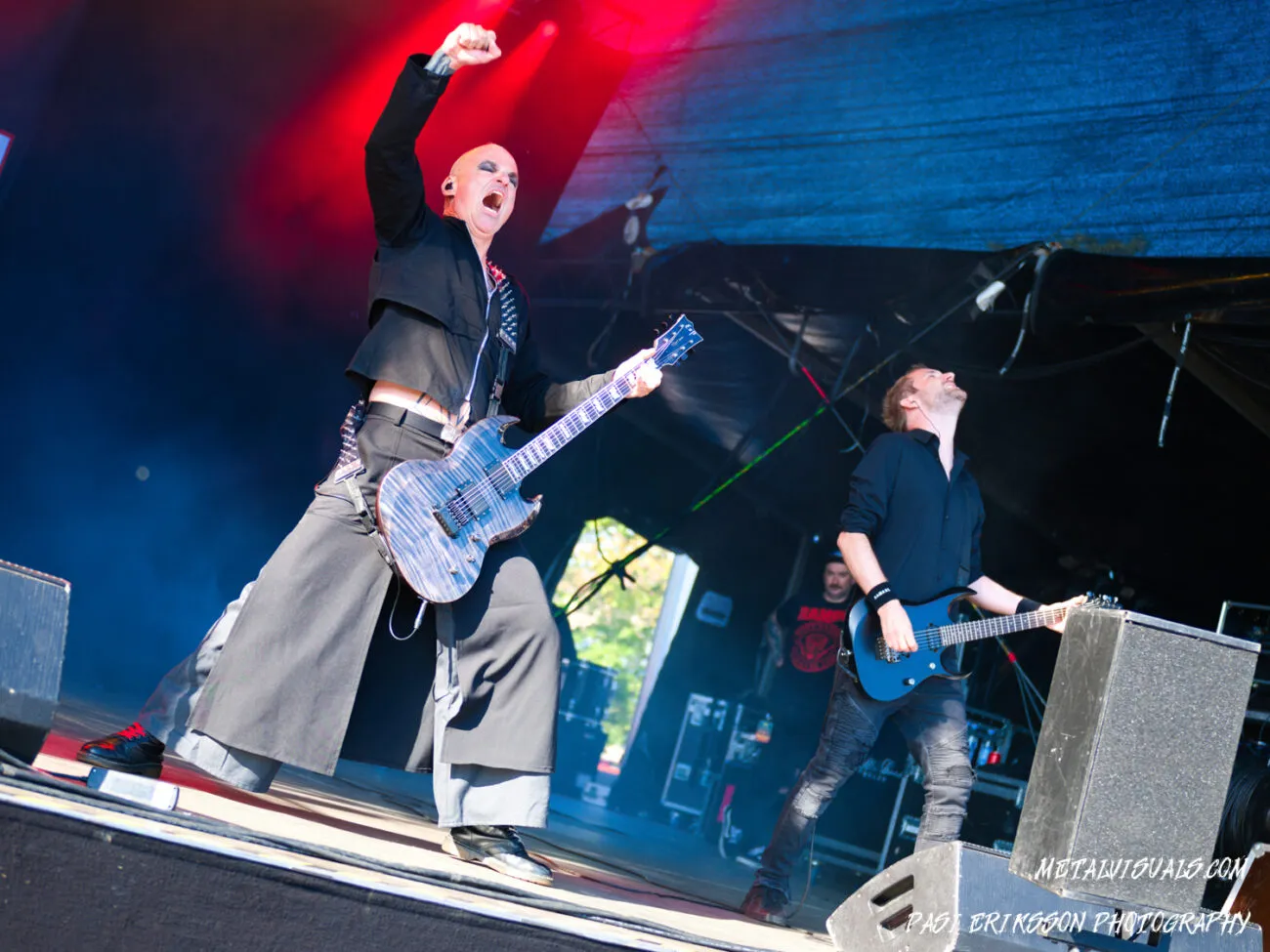
Kicking off the gig with the mighty “Rain”, Samael played a captivating set that focused on the band’s industrial metal sound. Stylish visually and musically, Samael had an energizing stage presence that felt both gothic and black metal-like. The other of the founding brothers, Xy, was particularly wild on stage. I don’t recall seeing a keyboardist play that wild, and the way that Xy changed between keyboards and drums was fascinating. That also paved the way for something not everyone may like: since Xy could, understandably, only play one instrument at a time, there were plenty of backing tracks. Considering the set was more focused on the industrial metal era of the band, that didn’t bother me. I’d even argue that machine drums can make industrial music sound even more bleak and inhumane. One such example is the excellent “The Ones Who Came Before”, which was the highlight of the concert for me with its catchy and aggressive industrial beats. “Baphomet’s Throne” and “Black Trip” from “Ceremony of the Opposites” were rather tasty as well. Not every song could reach this golden standard, but by closing with the best track of the latest album, “Black Supremacy”, Samael proved it’s aged like fine wine. I would have liked to hear material from the first two albums, but I think it would have felt out of place at a more industrial-sounding festival gig.
When former Morbid Angel members were about to perform the band’s classics under the I Am Morbid moniker at 6 p.m., I instead headed to the Kaaos Stage to catch the Swedish synthwave trio Priest. The band has undeniably gained special attention for having ex-Ghost members in their ranks, but their dark sci-fi and occult-tinged music speaks for itself. When vocalist Mercury, who was wearing a leather jacket and a BDSM mask with a Terminator-esque red eye, and sci-fi plague doctors Sulfur and Salt entered the stage, I had a feeling they’d deliver a fantastic show again.
Some three to four years ago, it seemed like the band would be haunted by a debut album that can’t be topped and an irreplaceable vocalist, but the current lineup shook away all of my doubts with last year’s excellent third full-length album, “Body Machine.” Having seen all of their three previous Finnish shows, it was delightful to notice the band has become more energetic and braver on stage. While a festival gig can’t match the intimacy of a smaller club, such as On The Rocks, where Priest played their first headline show in Finland earlier this year, the stage never felt too large for the band. Newer tracks like “A Signal in the Noise” and the surprisingly heavy “Blacklisted” fit right in with older gems, and the setlist was nicely varied. Some might have prejudices against electronic music gigs, but Priest had a lot of live components. The electronic drums were played live, and the keyboardist even played solos that don’t exist on the album versions. “Obey” was the most memorable performance, with Mercury going off-stage to greet the front row. I got to sing a little on the microphone, too. Hopefully, that didn’t ruin the gig for anyone.
That said, the show wasn’t perfect. The current incarnation of Mercury has clearly found their voice, but their vocal range isn’t quite as extraordinary as the former vocalist’s. None of the older songs sounded bad, but some nuances were missing. The setlist was also rather predictable for someone who had seen the band three times before this show. I suppose that’s to be expected from a 45-minute festival gig. Hopefully, they’ll play “Virus” and “Xpander” in Finland someday. You can also ask if certain elements of the band’s aesthetic and theme are copied from Ghost. I can’t say it bothers me, though. Touring with the likes of Combichrist and Powerman 5000 has done good for the band, and later this year they will have the honor of supporting Deathstars. Despite lacking the intimacy and longer setlist of their headline shows, Priest delivered an excellent performance. Check them out if you like Depeche Mode or the Perturbator songs with vocals.
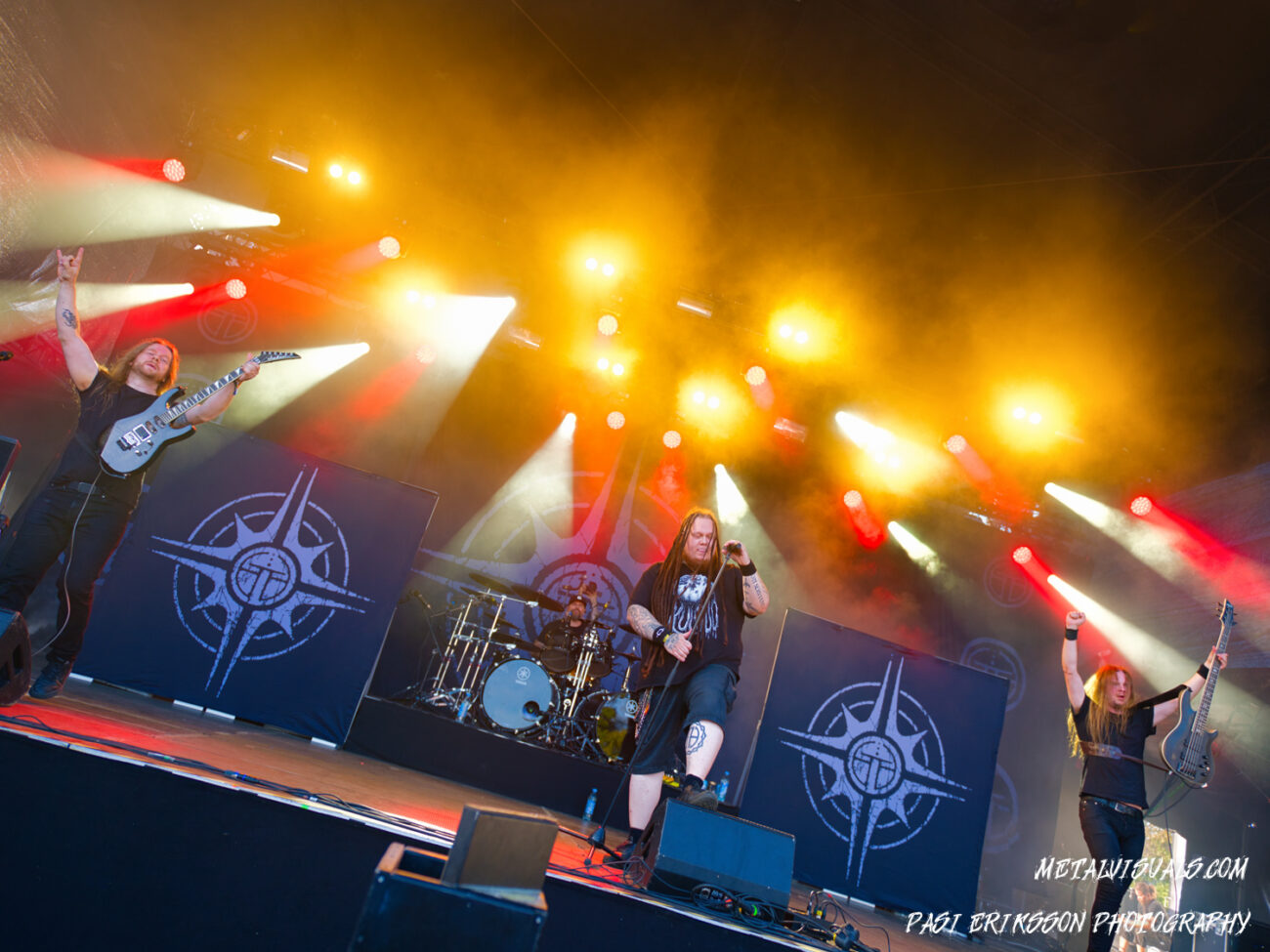
After Priest, I decided to head back to the vicinity of the main stages to catch Before The Dawn. Formed in 1999 as the solo project of Tuomas Saukkonen, the band recently released their first album in nine years and is headed for a comeback tour this autumn. I rarely enjoy melodic death metal, but Before The Dawn has enough gothic (or rather, just Finnish) melancholy in their music to please my taste. The band is nowadays fronted by Paavo Laapotti, who did a great job at singing Before The Dawn’s material on The Voice of Finland last year. It’s incredibly inspiring to see Laapotti go from a fan to the official vocalist of the band and take his place with such dignity. Laapotti’s powerful growling complemented the music perfectly, and both the band and the audience seemed excited. Saukkonen did a great job behind the drums, but even more impressive was bassist Pyry Hanski, whose energetic playing can also be witnessed in symphonic black metal veterans …And Oceans and many other bands. Laapotti’s clean vocals sounded somewhat thin at times, but other than that, Before The Dawn played an amazing show complemented by impressive pyros.
I was on my way to catch the Norwegian prog veterans Leprous, but then I heard blast beats echo down the hallways and wanted to track their source. This treasure hunt took me to the Kaaos Stage, where Déluge was playing the last songs of their set. I’d never heard of the French black metal and post-hardcore band before, but their performance proved very captivating. The band’s music screamed melancholy and reminded me of depressive black metal bands like Totalselfhatred and Austere, only with a thicker sound and more vocals more akin to hardcore punk. The lead guitars were especially delicious, and the band almost put me into a trance with just a couple of songs. Compared to the more traditional and bleak black metal performed by Asagraum, Dark Funeral and Watain, all of whom played great shows, it was nice to experience a slower and calmer black metal gig. Mind you, the band also knew how to do blast beats. Ultimately, as emotional as the performance was, Déluge’s music sounded a bit bland compared to other similar bands. Additionally, the vocals sometimes reminded me too much of metalcore, though far more tolerable than most bands I know in the said genre. Still, Déluge was a pleasant surprise.
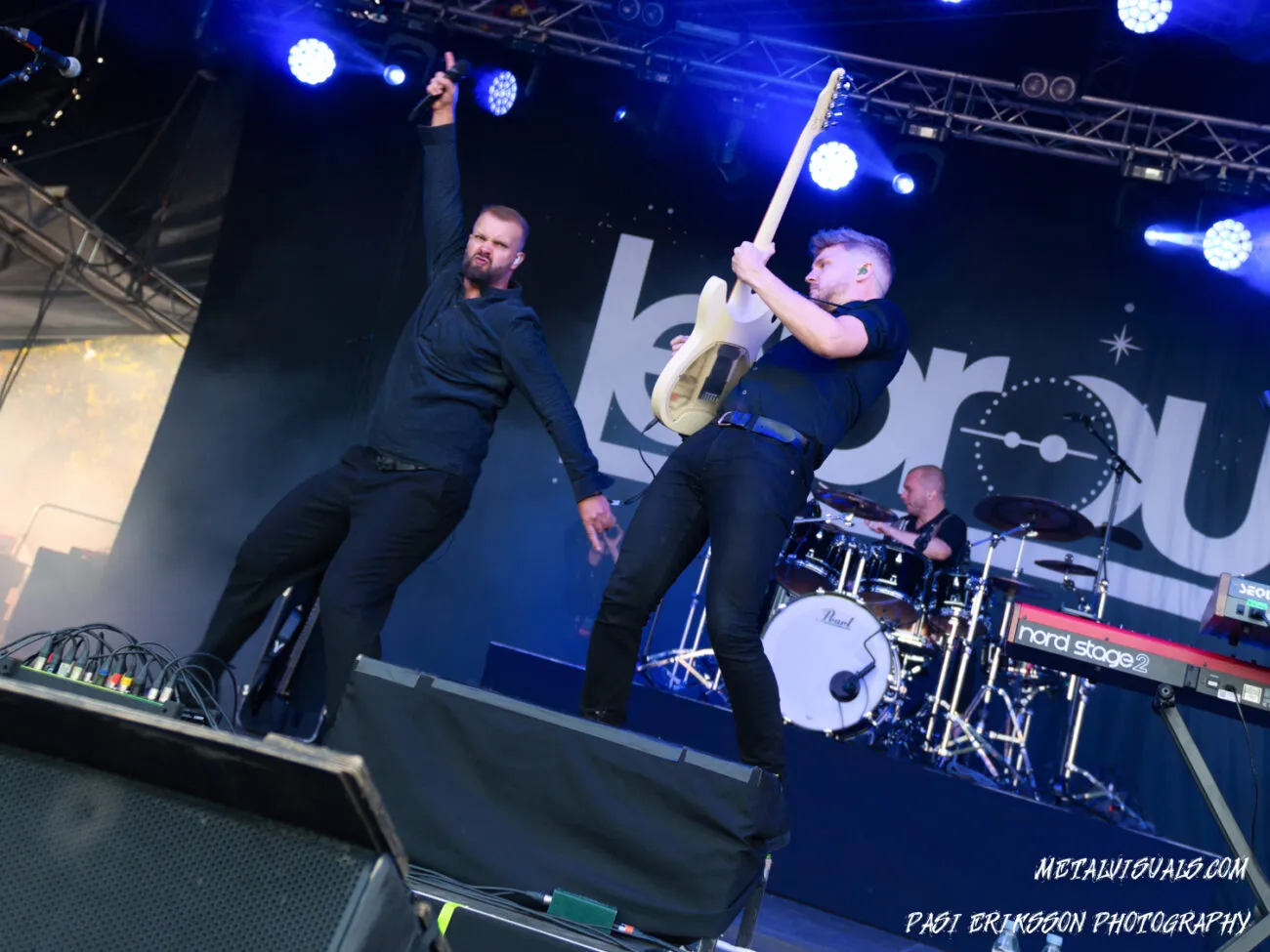
The Norwegian prog metal and rock ensemble Leprous, who have been going on for about 22 years, started their set on the first main stage at 8 p.m. Coming to catch the latter half of their set after Déluge’s performance, I wasn’t sure what to expect. The musicians are obviously talented, and the band has developed quite a following, but prog metal rarely speaks to me like rawer forms of music. It didn’t help that the last time I saw Leprous at Tuska 2018, I didn’t get anything noteworthy out of the performance. My taste has apparently developed, as the Norwegians immediately lured me in with a beautiful, emotional and atmospheric performance. Suddenly all the little details of the music added up, and I was taken to the beautiful yet harsh landscapes of the band’s home country. Vocalist and keyboardist Einar Solberg gave an especially astonishing performance, perhaps only falling behind his namesake and fellow Norwegian Einar Selvik from Wardruna when it comes to beautiful and bold singing (of the vocalists I know, that is). Leprous demonstrated the rare skill of performing technical music without sacrificing anything on the emotional side. On the contrary, the group’s touching and hypnotizing performance ended up being one of the best shows I’ve seen this year. The next time they come to Finland, you can find me in the front row.
The next band I checked out was the headlining act, none other than the mighty Emperor from Norway. I heard the first Finnish show of deathcore veterans Fit For An Autopsy, which started at the same time as Emperor but on the Kaaos Stage, was incredibly wild, but missing Emperor wasn’t a possibility for me. Formed in Norway in 1991, Emperor was right there when black metal exploded and developed into its own subgenre for good. Compared to many of their peers, Emperor has put more emphasis on musicality and technique, releasing such classic albums as “In the Nightside Eclipse” and “Anthems to the Welkin at Dusk.” Often credited as the pioneer of symphonic black metal, Emperor was easily one of my most anticipated acts on the lineup.
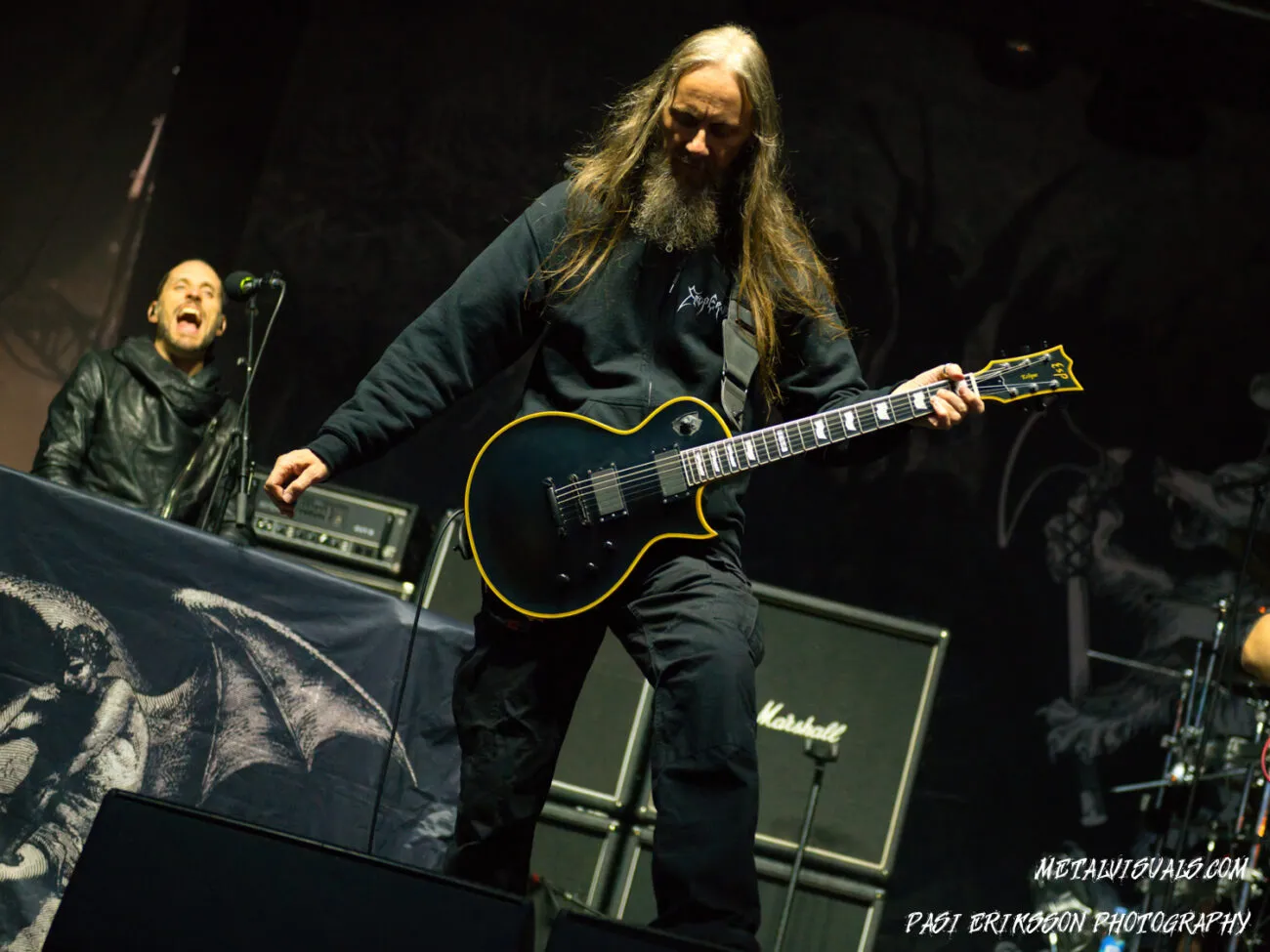
The previous time I saw the band at Tuska 2018, they performed their second album in its entirety, but this time their setlist didn’t focus on any particular album. Even so, it felt like a great celebration. By 10 p.m., the sun had already set and Emperor’s majestic black metal was free to roam across the night sky. Surprisingly enough, they started their set with “In the Wordless Chamber” from their last album, “Prometheus – The Discipline of Fire and Demise.” Quickly moving onto tracks from the first two albums, Emperor played an excellent set that spanned all of their full-length albums. With beautiful live keyboards and Ihsahn’s soul-screeching vocals, the band conjured a majestic atmosphere not many bands can reach. Singing the melodies of “Inno a Satana” together with fellow fans was something I didn’t expect from a black metal concert, and the band pleased us with not one but two encores.
Compared to more underground bands like Chamber of Unlight, Emperor’s performance was more of a musical performance than some kind of ritual, at least judging by Ihsahn’s habit of frequently chatting with the crowd. There’s obviously nothing wrong with that, and Emperor happens to be a particularly elegant and charismatic band on stage. Even so, performances like Chamber of Unlight’s offer something this show didn’t. I also found Emperor’s drummer, Trym Torson, to fall behind Kassara from Chamber of Unlight. While I have come to prefer more aggressive forms of black metal, Emperor delivered an excellent show. If I planned the setlist, I would have put “Wrath of the Tyrant” in there, but that’s nitpicking.

“You’ve had enough fun”, declared the final performer of the festival, who started their set at midnight on the Kaaos Stage. Indeed, the audience was in for something that goes beyond ordinary entertainment. With a set up that resembled an unholy shrine more than an ordinary stage, the self-proclaimed “black metal militia” Watain invited the festival goers to a ceremonial mass. Skulls, fire and blood set the backdrop to what would become probably the best black metal performance I have ever seen.
Formed in Uppsala, Sweden in 1998, Watain has released many celebrated albums such as “Casus Luciferi” and last year’s excellent “The Agony & Ecstasy of Watain.” But live shows are where the band truly shines. Besides delivering their material with untamed energy that rips the air like an explosion, the shows have a theatrical aspect that makes them feel like something more than just another gig. When I say theatrical, I don’t mean that everything at a Watain concert is just for show-off. Quite the contrary, the band is serious about what they’re doing. The passion and dedication shined through every moment of this gig as well. While the band played extremely tightly, there was a sense of urgency and spontaneous energy that I don’t believe to be achievable by mere technical prowess. Vocalist Erik Danielsson in particular performed with an explosive energy that surpasses most musicians I have seen live regardless of the genre.
The audience got their share of wildness too. After Danielsson lit up the candles with a torch, the torch somehow ended up in the hand of a fan in the front row. The people in the front row also got an impure baptism when Danielsson threw blood into the audience from a chalice. A wild mosh pit was also spotted. Musically, it was great to notice that newer tracks like “The Howling” didn’t pale at all in comparison to older material. Because this wasn’t my first time seeing Watain, I knew more or less what’s gonna happen during the show, but their hectic and wild energy kept it exciting. With the pyros complementing the show this time, my only complaint is that I would have wanted to hear more material from “Casus Luciferi.” Nevertheless, Watain closed the festival with style and delivered an unforgettable show. Out of the four times I’ve seen them, this was the best.
I was pleasantly surprised by the first day of Hellsinki Metal Festival, but the second day was even better in some aspects. The sound quality seemed to have improved, and the lineup was delightfully versatile. That said, I struggled to recognize my favorite Emperor song because of the sound quality. Even though the festival had a remarkably strong lineup, I was skeptical about the arrangements. I heard there were problems with the cloakroom service on the first day, but overall I found the festival to be very well arranged.
Having the outdoor main stages next to each other was an especially good idea because if you wanted to see two bands back to back, you could reserve a good spot and still see both shows fully. On the other hand, not everyone could fit in the Black Box and watch the bands playing on the Kaaos Stage. Many Watain fans in particular were irritated by this. Still, the situation wasn’t as bad as at some other festivals I’ve been to. There was almost an hour between the headliners and the final acts on the Kaaos Stage so I headed there well in advance. While it was nice to have time to reserve a good spot, it felt strange to have to wait that long for the next band at that time of the day. It was also confusing that the afterparties started before the festival itself had ended. This was especially true on the second day when most black metal fans would presumably want to see Emperor and Watain, but other black metal bands were playing at one of the afterparties at the same time. Additionally, it would have been nice to know when each band ends their set, especially with several interesting acts playing at the same time. Luckily the organizers corrected the mistake of having Dark Funeral and Impaled Nazarene play at the same time, though the Bob Malström and Terveet Kädet overlapping with each other was a bit strange.
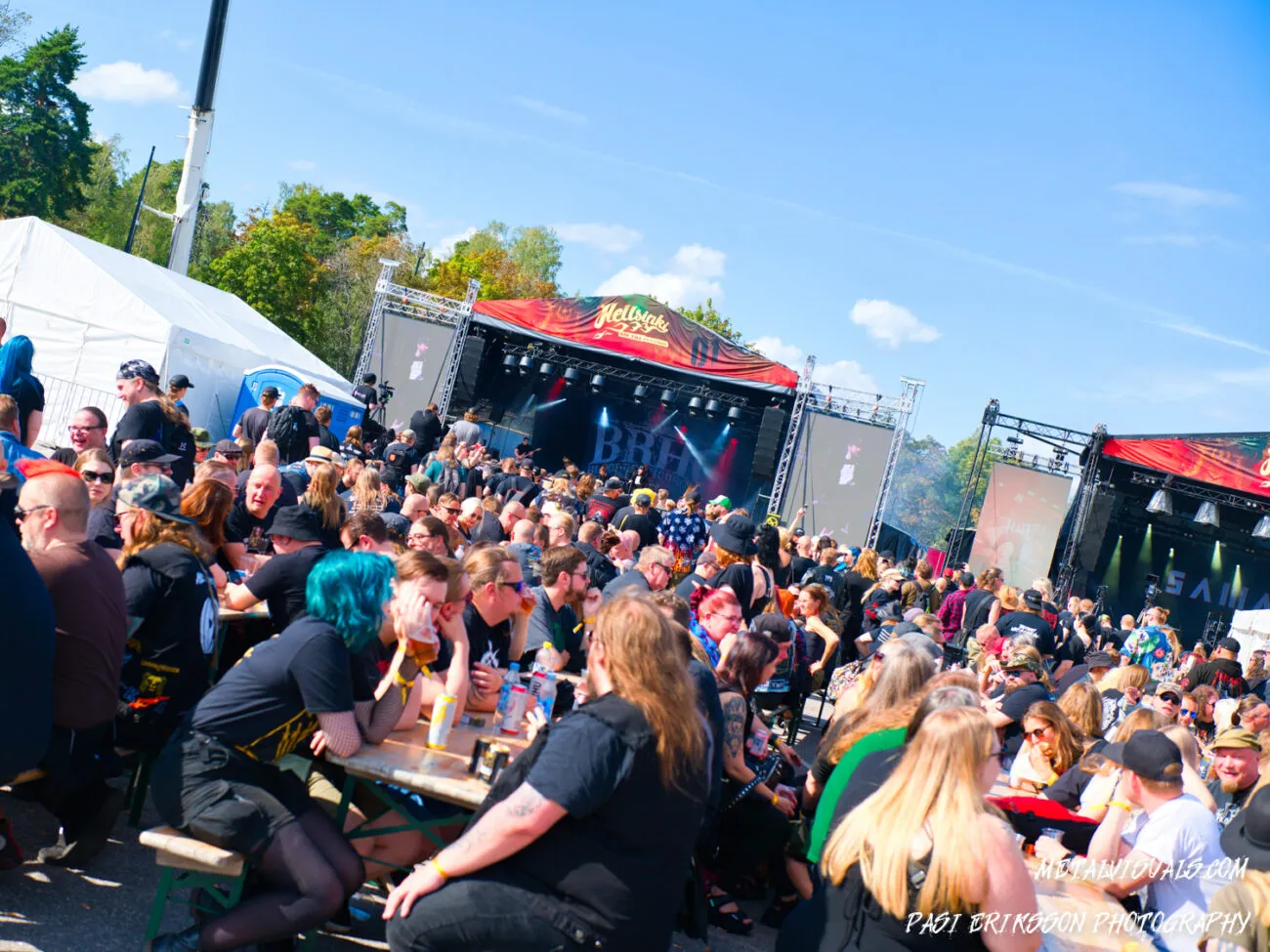
All in all, I had a great time at the festival. The atmosphere was good and the lineup was refreshing and well-curated. The next edition of the festival has already been announced to take place on the 9th and 10th of August 2024, and if it’s nearly as strong as this year’s first edition, I might have a new favorite festival. A huge thank you to everyone involved.
Photos: Pasi Eriksson
Text: Teemu Esko